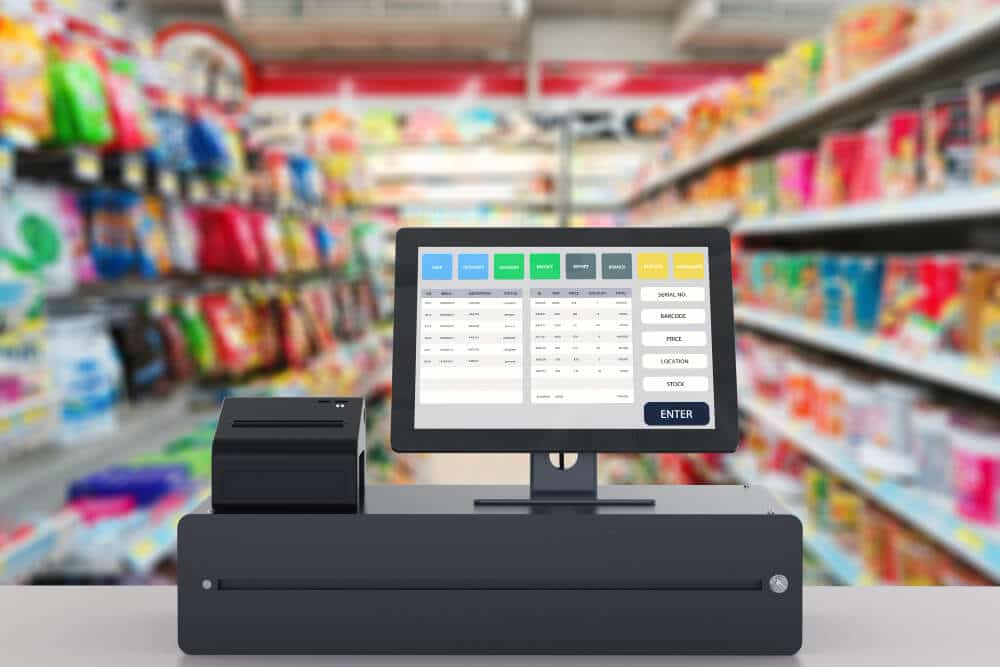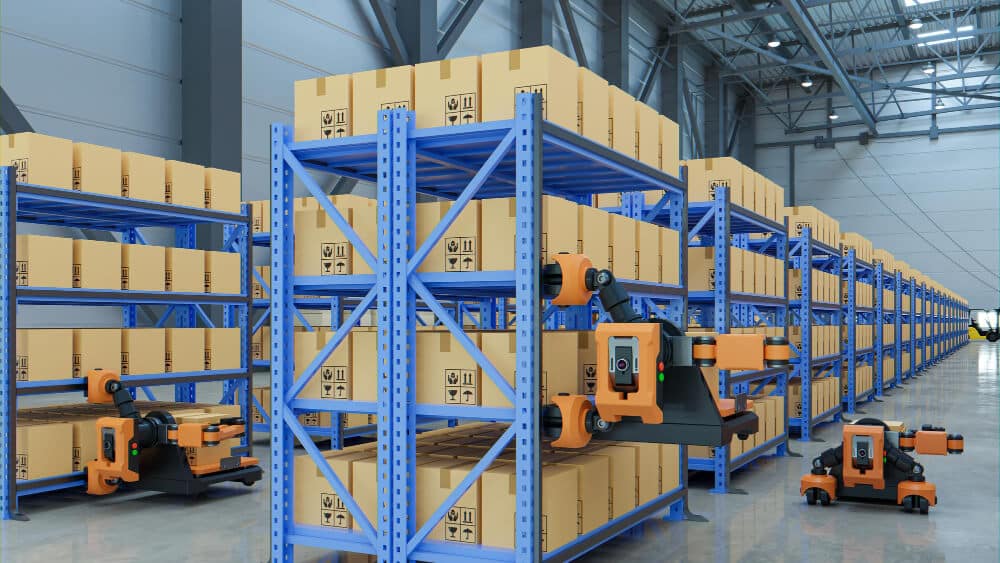Every penny counts when it comes to inventory management – overstocking can lead to costly inventory carrying charges, while stockouts can disrupt production and damage customer relationships. This is where just-in-time (JIT) inventory management comes to the rescue.
Every business that deals with inventory – whether it’s manufacturing goods or stocking a retail store – can benefit from JIT inventory management. It helps to decrease the waste and inefficiency associated with inventory, while also minimizing the risk of stockouts.
In this guide, we’ll cover everything you need to know about JIT inventory management, including how it works, its advantages and disadvantages, who should use it, and how it can improve businesses. So if you are looking to streamline your inventory management and save some money, read on!
Table Of Content
What is Just-In-Time Inventory Management?
How Does Just-In-Time Work?
Advantages and Disadvantages of JIT Inventory Management
Disadvantages of JIT Inventory Management
How does just-in-time inventory management improve businesses?Why might JIT not be appropriate for all businesses?
What are some alternatives to JIT inventory?
JIT Inventory Management FAQs
What is Just-In-Time (JIT) Inventory Management?
The just-in-time (JIT) inventory system is a management strategy that ensures you always have the right amount of raw materials on hand to meet production schedules. This inventory strategy is used by companies and businesses to increase efficiency and decrease waste.
This is done by receiving goods only when they are needed for the production process and this reduces inventory costs. This method requires producers to predict how much demand there will be for their products.
In simple words, JIT is a system where inventory arrives only when it’s needed and not before. This way, businesses don’t have to tie up their money in inventory that may not be used for weeks or months.
JIT inventory management has its roots in the Toyota Production System – an integrated set of company practices designed to minimize waste while maximizing efficiency. The system was developed by Toyota in the 1970s and later adopted by other Japanese manufacturers.

How Does Just-In-Time Work?
To understand how JIT works, we have to know the three types of inventory:
1. Raw materials:
Raw materials are the materials and components that are used to make a product. These are the items that a company purchases from suppliers to be used in the production process.
2. Work-in-progress (WIP) inventory:
Work-in-progress inventory refers to items that have been started but not yet completed. This might include partially assembled products or products that are waiting to be finished.
3. Finished goods:
Lastly, we have finished goods, which are the products that are completed and ready to be sold. These are the items that a company has in stock, waiting to be shipped to customers.
Now that we know the three types of inventory, let’s take a look at how JIT works.
JIT production is based on a “pull” system, where each step in the production process pulls the required materials from the previous step. This is in contrast to the “push” system, where production is based on forecasted demand and materials are pushed through the production process regardless of whether they are needed or not.
In a JIT system, there is no WIP inventory – as soon as a product is finished, it is sent to the next step in the production process or directly to the customer. This way, businesses only produce what is needed, when it is needed.
It helps to reduce wastages and inventory costs, while also minimizing the risk of stockouts. If businesses can accurately predict customer demand, a JIT system can help to ensure that they always have the right amount of inventory on hand without wasting money on excess stock.

Advantages and Disadvantages of JIT Inventory Management
Now that we know how Just in Time Inventory management works, let’s take a look at some of the advantages and disadvantages of using this inventory management system.
Advantages of JIT Inventory Management
Here are some of the key advantages of using a JIT inventory system:
1. Reduced Inventory Costs
One of the biggest advantages of JIT is that it can help to reduce inventory costs. This is because businesses only order the exact amount of raw materials they need when they need them. This eliminates the need for storage space for excess inventory and reduces the risk of stock obsolescence.
This way, businesses can save money that would otherwise be spent on inventory that is not being used.
2. Increased Efficiency
Another advantage of JIT is that it can help to increase efficiency in the production process. This is because there is no need to stop the production line to wait for raw materials to be delivered – as soon as a product is finished, it is sent to the next step in the production process. This can help to reduce production costs and lead to faster turnaround times.
3. Reduce wastage
JIT inventory management can also help businesses to reduce wastage. This is because businesses only order the exact amount of raw materials they need, which reduces the risk of raw materials being wasted. In addition, JIT can also help to reduce the number of finished products that are wasted, as businesses only produce the exact amount of products that are needed.
4. Improved quality
JIT inventory management can also lead to improved quality, as businesses have a better understanding of their production process and can identify and correct any problems more quickly. It not only helps businesses to produce a higher quality product but can also help to improve customer satisfaction. This way, businesses can build a better reputation and attract more customers.
5. Increased inventory turnover ratios
The inventory turnover ratio is the number of times inventory is sold or used in a period so the higher the ratio, the higher the efficiency. JIT inventory management can help businesses to increase their inventory turnover ratios as it helps businesses to sell their products more quickly and efficiently. So if a business has a high inventory turnover ratio, it means that it is selling its products more quickly and efficiently.
6. Faster production rate
When you have a faster production rate, you can serve your customers better and get a competitive advantage. JIT inventory management helps businesses to have a faster production rate as businesses only produce the exact amount of products that are needed. This way, businesses plan their production better and do not waste time on producing products that are not needed.

Streamline your business with Octopos– A Complete POS System with Big Boys Tools without the Big Price
It is a lot more than a point of sale. Octopos is easy and intuitive for you and your staff to use. Yet you get all these sophisticated tools to manage inventory, track and engage customers, get meaningful insights into your business, and much more.
Disadvantages of JIT Inventory Management
Despite the many advantages of JIT inventory management, there are also some disadvantages that businesses should be aware of:
1. Requires a high level of planning and coordination
JIT inventory management requires a high level of planning and coordination to be successful. This is because businesses need to make sure that they have the right amount of raw materials on hand at all times. This can be a challenge for businesses, especially if they are dealing with a large number of products. You might have to set up a team to coordinate the JIT inventory management process.
2. Can lead to disruptions in the production process
If you fail to plan properly, JIT inventory management can lead to disruptions in the production process. To meet the demands businesses need to have the right amount of raw materials on hand at all times. So if there are any delays in the delivery of raw materials, it can cause disruptions in the production process. And this can lead to losses for businesses as well as customer dissatisfaction.
3. Requires a high level of investment
JIT inventory management also requires a high level of investment to be successful. This is because businesses need to invest in the right infrastructure and systems to support the JIT inventory management process. In addition, businesses also need to train their employees on how to use the JIT system. This can be a costly exercise for businesses, especially if they are small businesses.
4. Missed opportunities
If you only produce the exact amount of products that are needed, you might miss out on opportunities to sell more products. You might save wastage but you might also miss out on the chance to increase your sales. It’s not uncommon for buyers to buy in bulk to get a discount. But if you only produce the exact amount of products that are needed, you might not be able to take advantage of such opportunities.
5. Risk of natural disasters disrupting the supply
JIT inventory management also carries the risk of natural disasters disrupting the supply of raw materials. This is because businesses need to have the right amount of raw materials on hand at all times. So if there are any delays in the delivery of raw materials due to a natural disaster, it can cause disruptions in the production process.

How does just-in-time inventory management improve businesses?
As you can tell by now, there are many advantages of JIT inventory management. But how does this system improve businesses?
To understand how JIT inventory management improves businesses, we need to look at the two main ways in which businesses can improve their operations:
Through cost reduction and through increased sales.
No matter what business you are running, your two main goals are to reduce costs and increase sales. And JIT inventory management can help businesses to achieve both of these goals.
Cost reduction
The first way in which JIT inventory management improves businesses is by reducing costs. As we mentioned earlier, businesses can save on storage costs as they only need to store the exact amount of raw materials that are needed. In addition, businesses can also save on production costs as they don’t need to produce products that are not needed.
If businesses can reduce their costs, they will be able to increase their profits. And this is the ultimate goal of any business.
Increased sales
The second way in which JIT inventory management improves businesses is by increasing sales. This might seem counterintuitive as we mentioned earlier that businesses might miss out on opportunities to sell more products if they only produce the exact amount of products that are needed.
But the fact is, JIT inventory management can help businesses to increase their sales. This is because customers are always looking for good-quality products that are in stock. And if businesses can provide their customers with what they want, when they want it, they are more likely to make a sale.
In addition, JIT inventory management can also help businesses to build a good reputation. This is because customers will be impressed with the fact that businesses can deliver products on time. And this can lead to repeat business and word-of-mouth marketing.
Why might JIT not be appropriate for all businesses?
JIT or Just-in-Time manufacturing is an effective production and inventory management system that ensures products are manufactured in a timely, cost-efficient manner. But while JIT may seem right for any business, certain factors could make it less suitable.
1. Risk of running out of stocks: JIT works best when there is a steady flow of supplies from suppliers. If any delays occur, shortages could arise which may upset customers and cause disruption to the production process. This can be extremely costly if there is a sudden demand for the products.
2. You have to depend on the supplier: JIT relies heavily on the reliability of your suppliers. If they make mistakes or are unreliable in meeting deadlines, you may be unable to meet customer demand quickly enough and risk losing their business. This means that you need to choose your suppliers carefully and form a reliable partnership with them.
3. High start-up costs: Setting up a JIT system can be expensive. You need to invest in the right tools, equipment, and skilled labor as well as manage the workflow effectively. This could mean investing in new technology or putting together a team of experts to oversee it all. This can lead to substantial start-up costs that could be difficult to recover.
4. Lack of customization: JIT focuses on producing items in large quantities to minimize costs and maximize efficiency. This means that there is often little room for customization which could be off-putting for some customers who prefer buying personalized products. This can make things difficult if you work in a sector where customers are used to having more options.
5. Poor quality: The quick turnaround of JIT means that there is less time for quality control between processes which could result in lower product quality as flaws may not be identified until the final stage. This could lead to customer dissatisfaction and reputational damage. And this is the last thing you want as a business owner.
Ultimately, JIT is a powerful tool but it is not necessarily right for every business. Careful consideration must be given as to whether or not the advantages are worth the potential risks before investing in this type of manufacturing system.
If done correctly, JIT can prove invaluable but if done incorrectly, it can lead to costly problems. Therefore, it is important to take the time to assess whether JIT is right for you before making any investment.
What are some alternatives to JIT inventory?
There can be a few disadvantages to using JIT inventory management. If this is the case, there are other inventory management models to choose from which may be better suited to specific business needs.
1. Just in case: This system is the opposite of JIT and works on the premise that it’s better to have stock available in case it’s needed than to run out. With this model, you would keep a large inventory with minimal disruption to production and customer service.
2. Days sales of inventory: The average number of days it takes for a company to sell all of its inventory is called days sales of inventory (DSI). This model takes into account the amount of inventory available at any given time and works on a three-month average.
3. Kanban: The Japanese term for “visual card”, kanban is based on JIT but focuses more on improving the whole production process from start to finish. It monitors each stage of production using cards that move from one stage to the next. This helps companies identify bottlenecks and make adjustments before problems arise.
4. Economic order quantity: Also known as batch ordering, this model works on the premise of ordering in bulk but not ordering too much at once. It factors in some cost elements such as production costs, storage costs, and ordering costs to determine the best order quantity.
5. ABC analysis: This model works by grouping items into three categories based on their value or importance. For example, category A would include expensive items that are purchased in small quantities; category B items are of moderate value and purchased in moderate quantities; while category C items are low-cost items that are purchased in large quantities.
JIT Inventory Management FAQs
1. What businesses need to use JIT inventory management?
There is no one-size-fits-all answer to this question, however, if you are in the manufacturing business such as the car industry, JIT inventory management can be very beneficial. This is because JIT inventory management can help businesses to reduce their production costs and increase their sales.
2. What companies use JIT inventory management?
Some of the most famous companies that use JIT inventory management are Toyota, Amazon, Tesla, Honda, and Nissan. These companies have been using JIT inventory management for many years and it has helped them to become some of the most successful businesses in the world.
3. What is the difference between Just In Time and Just In Case inventory management?
The main difference between Just In Time and Just In Case is that Just In Time is a proactive approach to inventory management while Just In Case is a reactive approach. With Just In Time, businesses only produce the number of products that are needed while with Just In Case, businesses produce products in advance in case demand increases.
4. How can I implement JIT inventory management in my business?
If you are interested in implementing JIT inventory management in your business, there are a few things that you need to do. First, you need to analyze your business and find out where you can reduce costs.
Second, you need to make sure that you have the necessary resources in place such as the right software and the right team.
And last, you need to make sure that you have a good understanding of JIT inventory management so that you can implement it in the right way.
If you have the budget, you can set up a team to work on JIT inventory management for your business.
Octopos can make a just-in-time inventory system much easier to implement successfully. Watch a demo today.

